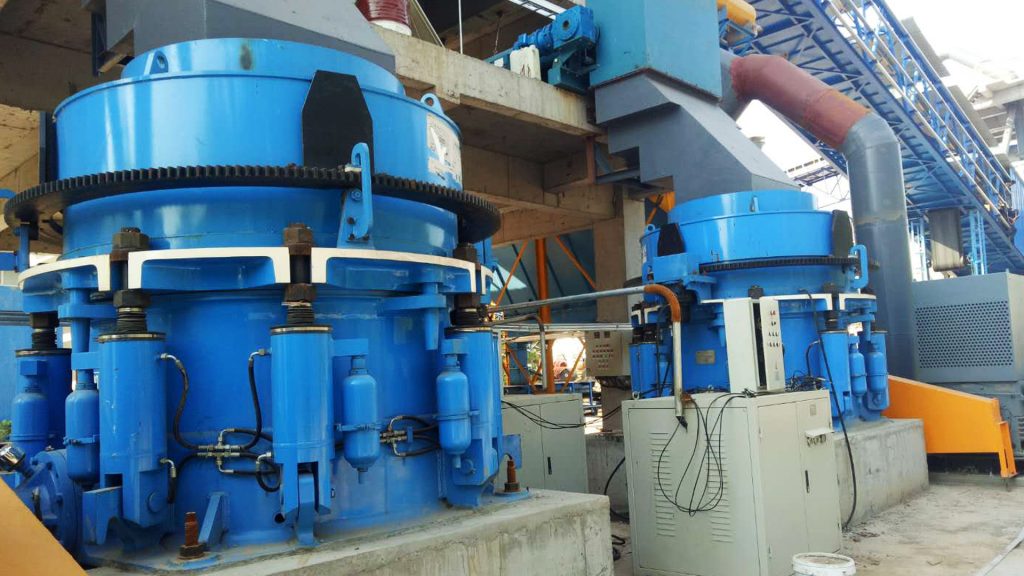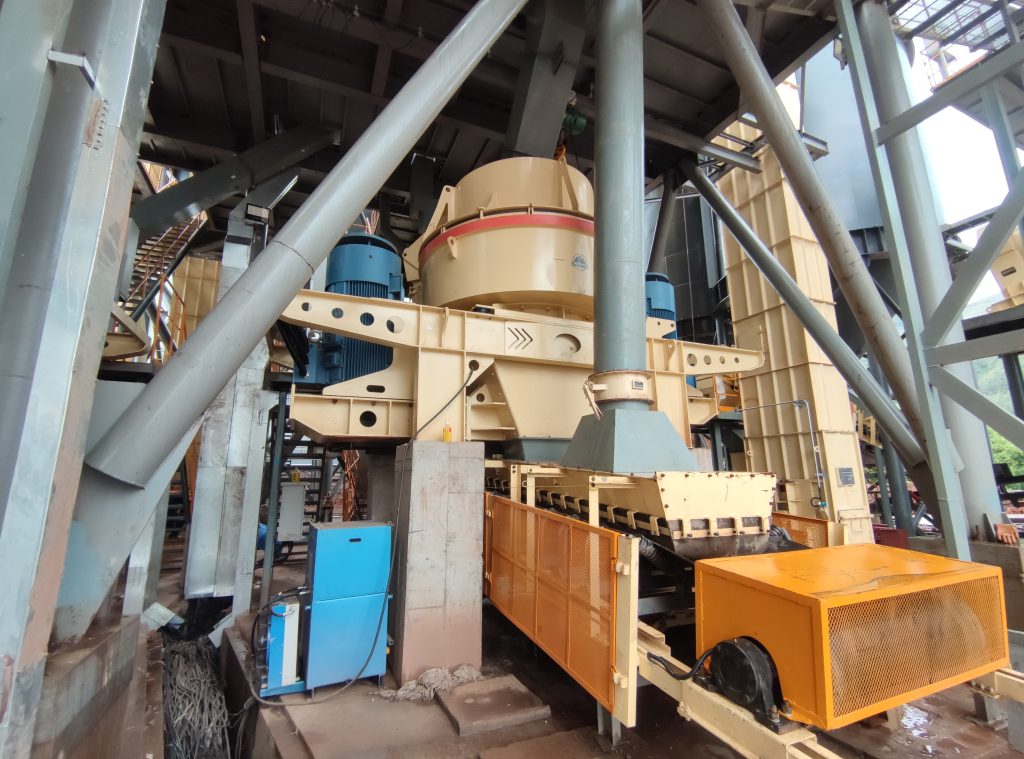
400Kw Metallurgy Feeding 460mm Cone Crusher Machine
2025-11-12
When selecting a tertiary crusher, a comprehensive judgment must be made based on material characteristics, output requirements, equipment performance, and process objectives. Specific selection strategies are as follows:
1、Selecting Equipment Type Based on Material Characteristics
Hard Materials (e.g., granite, basalt, river pebbles)
Recommended Equipment: Vertical Shaft Impact Crusher (VSI), Cone Crusher (as a supplement to tertiary crushing).
Reason: Hard materials require high wear resistance from equipment. The VSI reduces wear on vulnerable parts through the “stone-on-stone” principle, while the cone crusher is suitable for fine crushing of high-hardness materials.
Example: A granite production line uses a cone crusher for secondary crushing, followed by a VSI for tertiary crushing. The finished sand particles are rounded with controllable powder content.

Medium-Soft Materials (e.g., limestone, shale, coal gangue)
Recommended Equipment: Hammer Impact Crusher, Roller Crusher, Third-Generation Sand Making Machine. Reasons: Medium-soft materials are brittle. Hammer impact crushers achieve efficient crushing through the impact of the impact plates and hammers, while roller crushers are suitable for controlling the output particle size.
Case Study: A limestone sand production line uses a hammer impact crusher as the tertiary crusher, resulting in uniform output particle size and low equipment maintenance costs.
Special Materials (e.g., iron ore, metallic silicon, steel slag)
Recommended Equipment: Four-roller three-crusher, three-roller crusher.
Reason: Special materials require ultra-fine crushing or controlled particle size distribution. Four-roller three-crusher achieves 0.1-5mm output through multi-stage extrusion, while three-roller crushers are suitable for fine crushing requirements of 60 mesh-8mm.
Case Study: A steel slag treatment plant uses a four-roller three-crusher, achieving stable output particle size and improved iron recovery rate.
2、Matching Equipment Specifications Based on Production Capacity
Small Production Line (Output <100t/h)
Recommended Equipment: PWC1400×1400 hammer impact crusher, 3PG series three-roller crusher.
Reasons: Small-scale equipment requires low investment and occupies little space, making it suitable for small to medium-sized sand and gravel plants or mobile crushing stations.
Example: A mobile crushing station is equipped with a 3PG0806PT three-roll crusher, achieving a discharge size of 60 mesh to 8mm, meeting the needs of construction sand.
Medium-scale production line (output 100-300t/h)
Recommended equipment: HTI series three-stage impact crusher, third-generation sand making machine (such as PXJ 1200×1000).
Recommendations: Medium-scale equipment balances efficiency and stability. The HTI series achieves fully automatic adjustment through modular design, while the third-generation sand making machine is known for its high output and low energy consumption.
Example: A limestone production line with a capacity of 200 tons per hour uses an HTI 1014 impact crusher, achieving a 90% discharge particle size below 5mm.
Large-scale production line (output > 300t/h)
Recommended equipment: Vertical shaft impact crusher (large model), four-roll three-crusher (high-capacity model). Reasons: Large equipment needs to meet the requirements of continuous operation. Vertical shaft impact crushers (VHS) achieve output adjustment through frequency conversion control, while four-roller triple crushers ensure overload safety through hydraulic protection.

Case Study: A 500-ton-per-hour granite production line uses two VHS machines in parallel, producing continuously graded finished sand that meets high-speed rail sand standards.
3、Optimizing Equipment Configuration Based on Process Objectives
Pursuing Particle Roundness
Recommended Equipment: Vertical shaft impact crusher (with shaping function).
Reason: The VHS machine uses a “stone-on-stone” principle to cause materials to collide, generating cubic particles and reducing the content of needle-like and flaky particles.
Case Study: A high-end concrete sand production line uses a VHS machine, producing finished sand with a particle shape coefficient <1.6, meeting Class I sand standards.
Controlling Powder Content
Recommended Equipment: Third-generation sand making machine (equipped with air classifier), roller crusher (closed design).
Reason: The third-generation sand making machine separates fine powder through air classifier, while the roller crusher reduces over-grinding through compression crushing.
Case Study: A dry sand production line uses a third-generation sand making machine, controlling the powder content of the finished sand to within 3%, eliminating the need for additional sand washing.
Achieving Multi-Stage Crushing Integration
Recommended Equipment: Third-generation sand making machine (reducing three-stage crushing to two-stage crushing).
Reason: The third-generation sand making machine, through optimized crushing chamber design, can directly finely crush materials after two-stage crushing to below 5mm, simplifying the process.
Case Study: A limestone production line uses a combination of a jaw crusher and a third-generation sand making machine, eliminating the cone crusher step and reducing equipment investment by 40%.